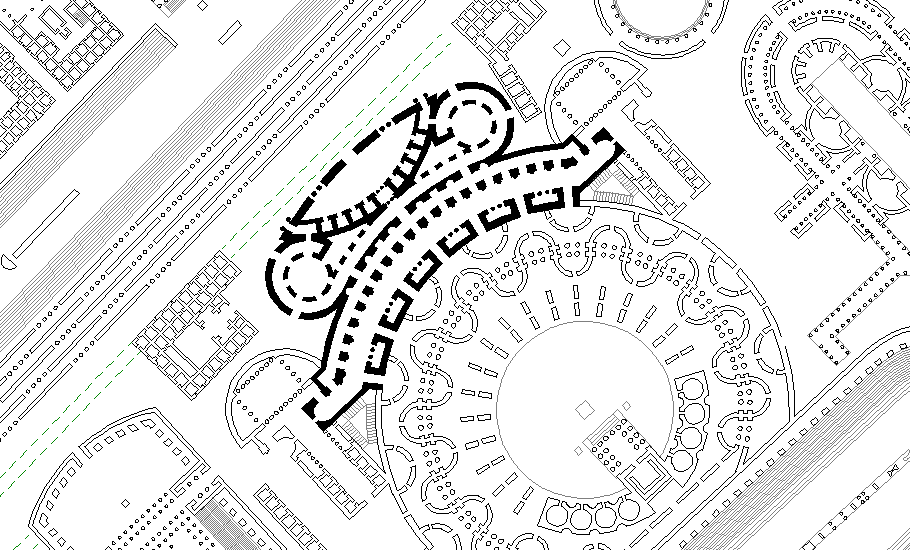2013
"Every good story needs a complication. ... A story needs a point of departure, a place from which the character can discover something, transform himself, realize a truth, reject a truth, right a wrong, make a mistake, come to terms."
1998
The building projects of Alexander Severus as described within the The Scriptores Historiae Augustae.
...the Porticus Alexexandri Severi is in a totally incorrect position at the end of the Equiria, however, Piranesi may be making a suggestive link between Alexander Severus and the military. The small aedicule Isidis on the Equiria across from the Porticus may also be a reference to Alexander's devotion to his mother--Isis is the premiere mother goddess.
...the baths, aqueduct and his grove all comply correctly within the Ichnographia.
...the Domus (Palace of) Alexandri Severi is mentioned in the Historiae text, but it is not described, and my theory is that Piranesi placed Alexander's (house) Palace along the Triumphal Way (in the reverse mode) because Alexander favored Christianity and the Golden Rule. The Domus Alexandri Severi [of the Ichnographia] is also exactly like the description of Elagabalus' Palace near the Porta Maggiore. Could Piranesi be weaving some complicated message which refers to both the reigns of Elagabalus and Alexander (which did follow each other, and they were cousins), where Alexander successfully undid the corruption of Elagabalus and began to turn Rome toward a more Christian and morally sound city and empire?
...not yet sure, but I think Alexander Severus' name is attached to more buildings within the Ichnographia second only to Nero.
2013
The Scriptores Historiae Augustae is now freely available online, and Bill Thayer has nicely coordinated the text with Platner's 'topography of Rome' text. I can't remember now, but I assume the description of Elagabalus' Palace also came from the Scriptores Historiae Augustae. In any case, what remains of Elagabalus' Palace today is Santa Croce in Gerusalemme, and transposed by Piranesi to the Domus Alexandri Severi along the Triumphal Way.
1998
from: Amanda Claridge, Rome: An Oxford Archeological Guide (Oxford: Oxford University Press, 1998). p. 21:
Bassianus, came to Rome in 219 and, holding the family priesthood of the sun-god Elalgabalus, declared that he and the god were one and the same, building himself a temple on the Palatine and laying out a new palace, later called the 'Sessorian', with its own circus and amphitheater, on older imperial property in the south-east sector of the city (S. Croce in Gerusalemme).
This description fits perfectly Piranesi's design of the Domus Alexandri Severi. Piranesi's reason for doing this is unclear however... ...can only speculate there is some kind of inversion message involved.
| |

scene: Domus Alexandri Severi
|